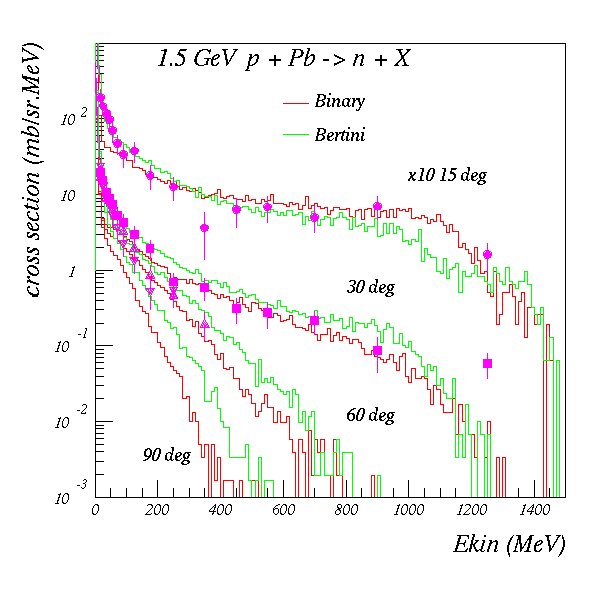A proton beam of 1.5 GeV is incident upon a Pb target. The double-differential neutron cross sections are measured vs. angle and kinetic energy. - Reference: K. Niita et al., Phys. Rev. C52, 2620 (1995).
Simulation Conditions - Geant4 version: 8.1
- Models: Binary, Bertini cascades
Comments - Circular data points: 15 degrees, square: 30 degrees, triangular (pointing up): 60 degrees, triangular (pointing down): 90 degrees
- Binary cascade predictions:
- 15 degrees: under 100 MeV under-estimates by up to 50%, above 100 MeV, reasonable agreement
- 30 degrees: up to 900 MeV, lies within experimental error bars. Afterwards, spectrum turns down too soon, under-estimates by perhaps 90%
- 60 degrees: under-estimates at most energies by about 40%
- 90 degrees: under-estimates at most energies by about 60%
- Bertini cascade predictions:
- 15 degrees: good agreement up to 900 MeV, afterwards under-estimates by about 40%
- 30 degrees: good agreement up to 200 MeV, afterwards over-estimates by about 40% and more than 900% at 1250 MeV
- 60 degrees: good agreement up to 150 MeV, afterwards over-estimates by about 50%
- 90 degrees: within error bars up to 200 MeV
Summary - The Bertini cascade does a generally better job than the binary cascade of reproducing the neutron spectra, although there are typically 50-60% deviations from the data.
Plots  | 